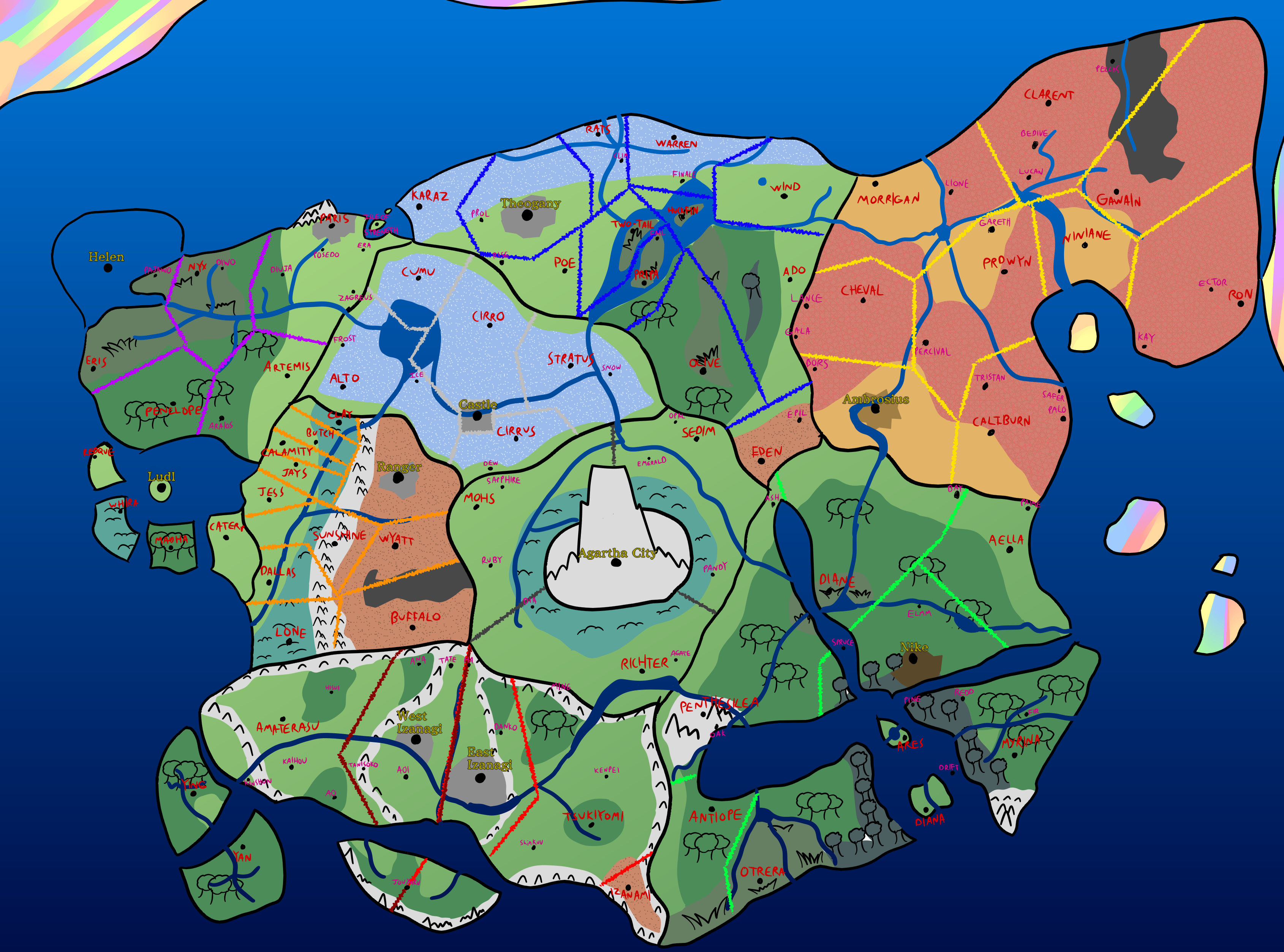Shifter
Unlike most people on Edda, Shifters were not formed when the Second Cataclysm changed mana and energy into flesh and blood. Instead, the beings known as Shifters are the result of a different change.
Around 5,000 BC (Before Countries), a ritual known as Dark Sun was commenced, and while not much is known about how the ritual failed, it's failure resulted in the very essence of Magic to be shattered into the 8 (technically 9) schools to this day, along with making many ancient magic methods useless.
Among that, were the original Werepeople, individuals with the ability to take on animal-like traits of various creatures, a process which was done with acute control over the flow of mana within their own body. Unable to fully transform in the wake of Dark Sun, these individuals and the generations to come would be known as Shifters, as they can only merely shift their appearance rather than take on all the animal aspects they once could.
While there are many different kinds of Shifters throughout Edda, with many descendants taking on aspects from a plethora of animals, there are four main categories they can fit into.
Beasthide: Typically large and prone to more muscular development, Beasthide Shifters call upon the strength of sturdy, tough creatures. Within Edda, most of them are found in the colder regions of Magnum Opus and Laputa, as their shifted features do not lend themselves well to heat.
Longtooth: Calling upon the power of expert stalkers and attackers, Longtooth Shifters can tap into the more bloody aspect of nature at will. However, most people who meet Longtooth Shifters will find them to be more protective than aggressive. Within Edda, Longtooth families are more widespread, but are most populous within Hippolyta, much to High Elves chagrin.
Swiftstride: As free and fast as the wind, Swiftstride Shifters can call upon the speed of nature to put the pep in their step. Within Edda, long families of Swiftstride Shifters can be found in places with wide, open fields that suit their fast-and-free lifestyle the most, typically in Magnum Opus or Agartha.
Wildhunt: Protective, watchful, and cautious. Wildhunt Shifters call upon the power of the hunters, the stalkers, and the predators of the animal kingdom to heighten their senses and abilities while pursuing a target. Wildhunt Shifters tend to prefer to stay in one place and guard their home, so most of them stay where their families settled generations ago, most commonly in Magnum Opus, but you can find a couple anywhere there is a forest.
Naming Traditions
Unisex names
As Shifters do exist all over Edda, there's no strict naming system for their given names. However, since most of them live in or hail from Magnum Opus, it's most common for Shifters to have Magnian names. Beasthide Shifters have mostly Northern Magnian names (Real World Equivalent: Slavic), while most of the other Shifters have Southern Magnian names (RWE: Germanic or Celtic).
Family names
Traditional Shifter surnames allude to the animal they draw their traits from, along with one of their core values. While there's been change and adaption over the generations, long-lasting families of Shifters will typically still have traditional surnames.
Culture
Shared customary codes and values
While most family codes will depend on a Shifter clan's location, subtype, and personal ideals, the most common unifying feature of these codes is Respect. Not only for one another, but for every living creature, especially those that are used for food, fur, or other products.
Common Etiquette rules
While many outsiders can only imagine that Shifter households would be quite a mess for how much they tend to haul in from their hunts, most Shifters have strong organizational skills passed down in their younger years, so they keep everything nice and orderly.
Common Dress code
Shifters tend to prefer dressing for harsh weather and the task for the day. For example, a Beasthide Shifter in Laputa, set on gathering firewood will dress in warm layers, but not so much that his body can't breathe.
Art & Architecture
Art from Shifter cultures, both in the past and modern-day, tend to involve themes of nature, animal life, and the cycle of life and death, and often include animal bones, especially in sculptures.
Common Customs, traditions and rituals
The oldest still-living tradition among Shifters is the Clan Trade, where different Shifter clans in the same general area would come to a shared location and trade their wares and left-over products with one another, followed by a large community feast for all those who attended.
A practice that has widely gone out of practice is The Storm Hunt, usually occurring around Veilnight when Shifter clans would come together for a mass hunt of strange creatures that crossed the veils, along with hunting alongside their ancestors.
Ideals
Beauty Ideals
While the generational ideals get muddier as modernity takes and adapts all, traditional ideals of beauty for Shifters were primarily focused on signs of effective hunting. Wearing many furs, or showing off scars gotten from multiple successful, yet tough battles.
Gender Ideals
In many Shifter families, it was common for all sides of a relationship to share equal duties, no matter the gender. However, when those who could produce children were pregnant, their duties became less focused on hunting and more focused on protection and providing.
Courtship Ideals
There aren't many courtship rituals for Shifters, as they tend to naturally form groups and communities with those around them, so matchups frequently just depend on consenting partners without much complication or fuss. For those who wish to go the extra mile, however, usually giving a high quality or meaningful pelt is a typical ritual.
Parent ethnicities



Comments